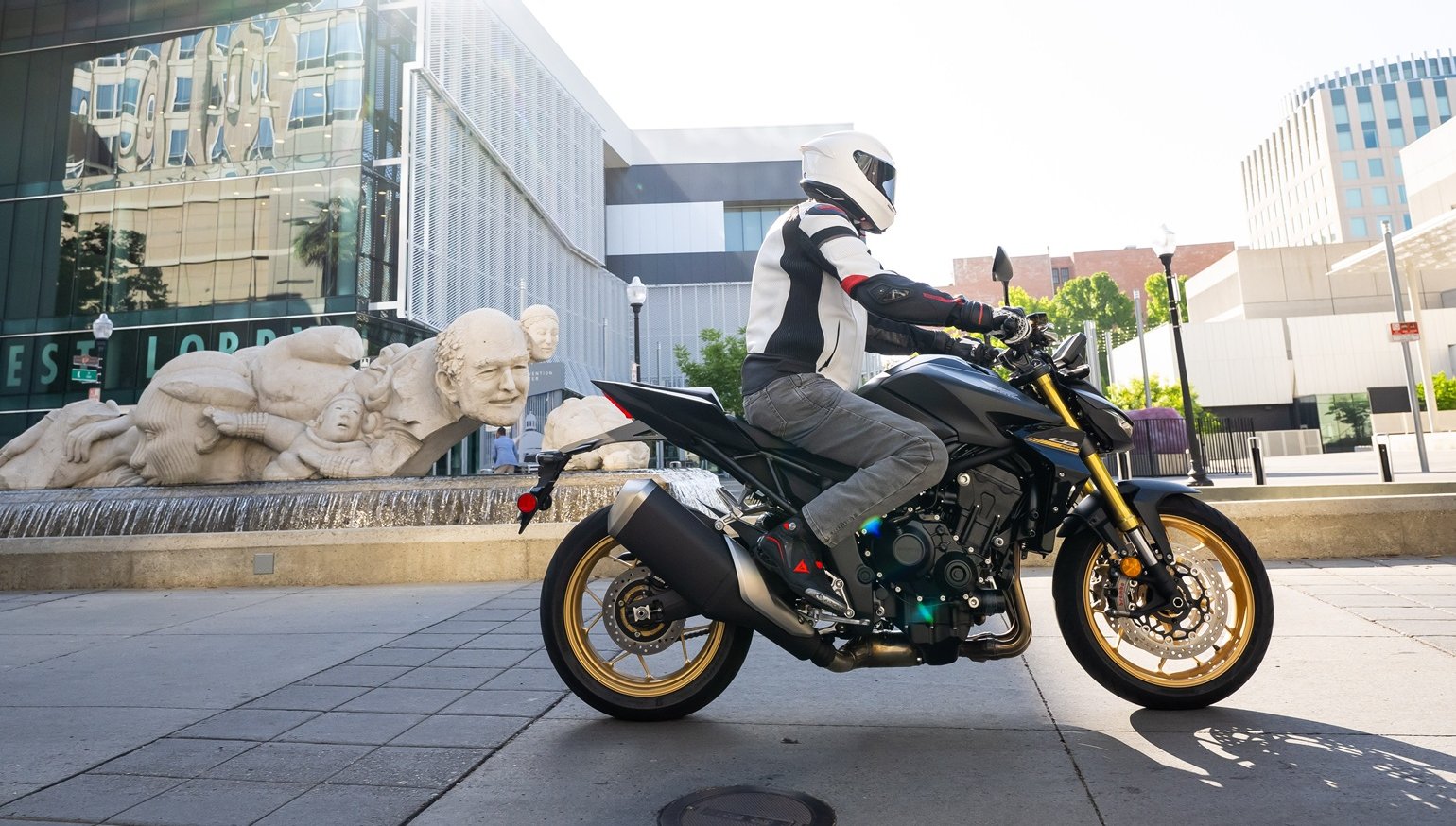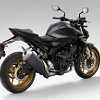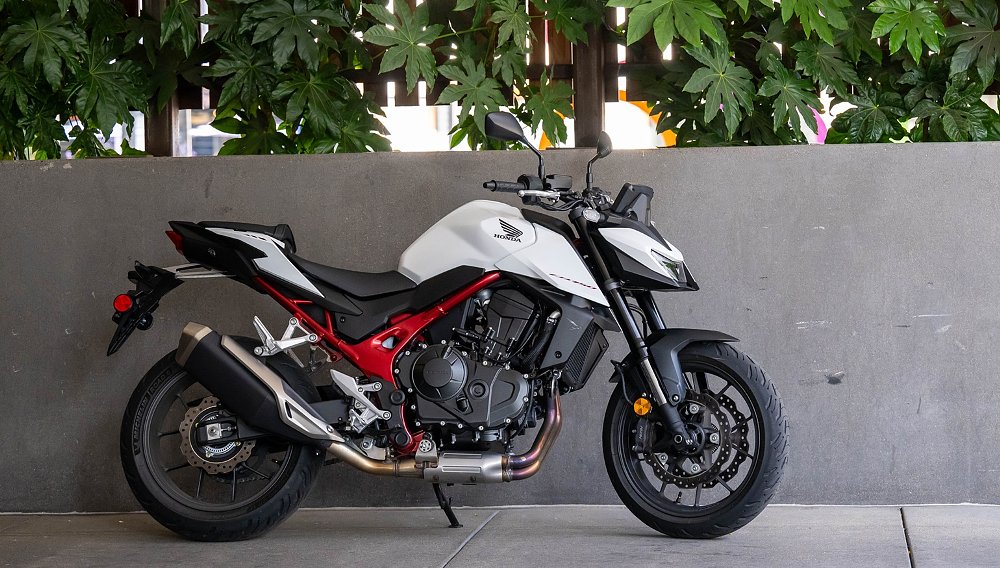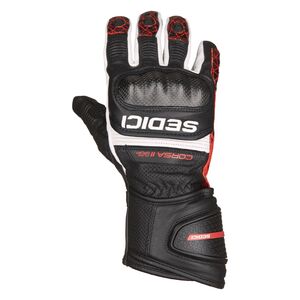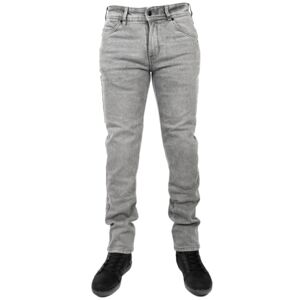I'm going to preface this by saying that I work with the best in the business, no question. At the same time, it's getting harder for me to listen to my 40ish colleagues complaining about how old they're getting, from gripes about sport bike ergonomics to regular laments over creaky knees. Fellas! If you use up your quota of old-age grumbling now, what are you going to do when you're my age?
I think Honda has a partial solution to my problem. I need to just send my co-workers to go for a nice ride on the new 2025 Honda CB1000 Hornet SP. Its ergonomics won't strain their backs, necks, wrists, knees, or any other part of their allegedly aging anatomy (well, maybe one part, but I'll get to that later). They'll still get the ride modes, up-spec suspension and brakes, light weight, and triple-digit horsepower they're accustomed to from being spoiled by a steady supply of press bikes. And the three new dads (hmmm, now that I think about it, maybe lack of sleep has something to do with the crankiness and creakiness) won't even have to raid the progeny's college fund, because the Hornet is a genuine built-in-Japan liter-class motorcycle with an MSRP of a buck under $11,000. And that's for a Honda, not some brand you've never heard of or has changed hands five times in the last half century.
Not that I'm saying the big Hornet is only suitable for those who have outgrown sportier bikes. I'll admit my bias for the straightforward approach of an upright naked bike that keeps the weight under a quarter ton and packs grunty power in the engine bay. But I don't believe I'm the only one who will think the CB1000 Hornet SP has the potential to appeal to a broader demographic swath of the U.S. motorcycle-buying public. I was eager to find out for myself as I flew west to California's Gold Country for a test ride.
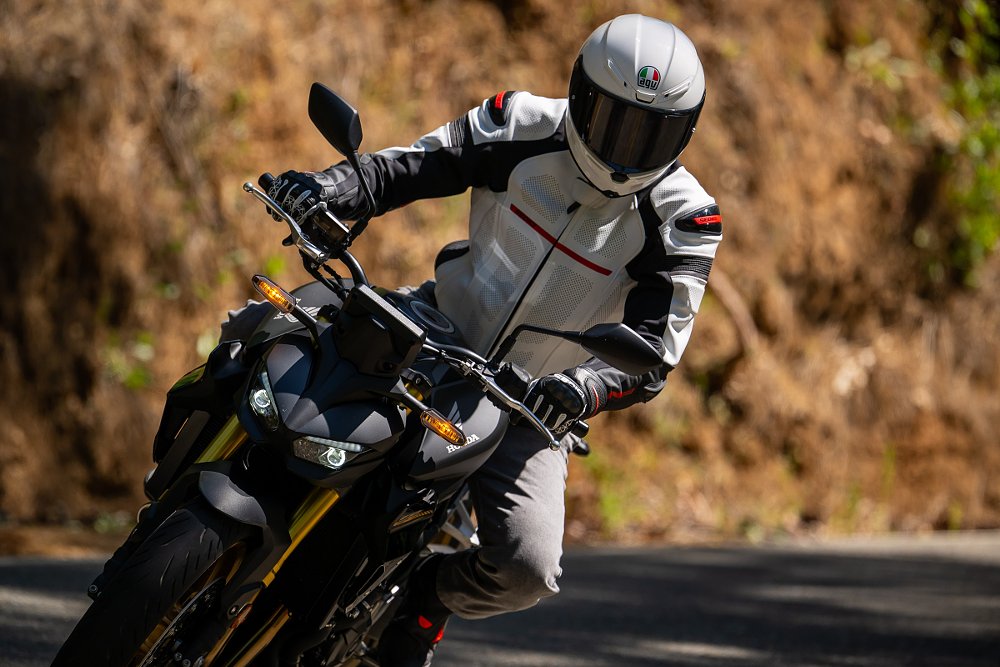
Euros no longer get all the fun
The last time we wrote about models that Europe gets that we don't get here in the United States, the Honda CB750 Hornet was prominent on the list, but the liter-size Hornet could just have easily filled that slot. Introduced in 2023, the CB750 Hornet in particular became a popular model in Europe.
U.S. riders will be less familiar with the Hornet name than the rest of the world, in part for legal reasons and in part because this is not the first time Honda made us wait. The first Hornet was a Japan-only CB250 model that came out in 1996. The CB600F Hornet and CB900F Hornet came out in 1998 and 2002 in other markets, and while the we got the 900 right away, the 600 didn't arrive until 2004. Having trouble remembering a Hornet model from those years? That's because they were called the 599 and 919, because Chrysler owned rights to the Hornet name in the United States. This time around, Honda was able to negotiate use of the Hornet name. Part of that deal was letting Ram use the Rebel name on one of its pickup trucks.
The Hornet name implies a certain formula: a naked bike with broad-shouldered, narrow-waisted look that features a punchy engine, agile handling, and an attractive price. The current generation of Hornets is not as unadorned as the 599 and 919 of 20 years ago, but they carry on the same theme.
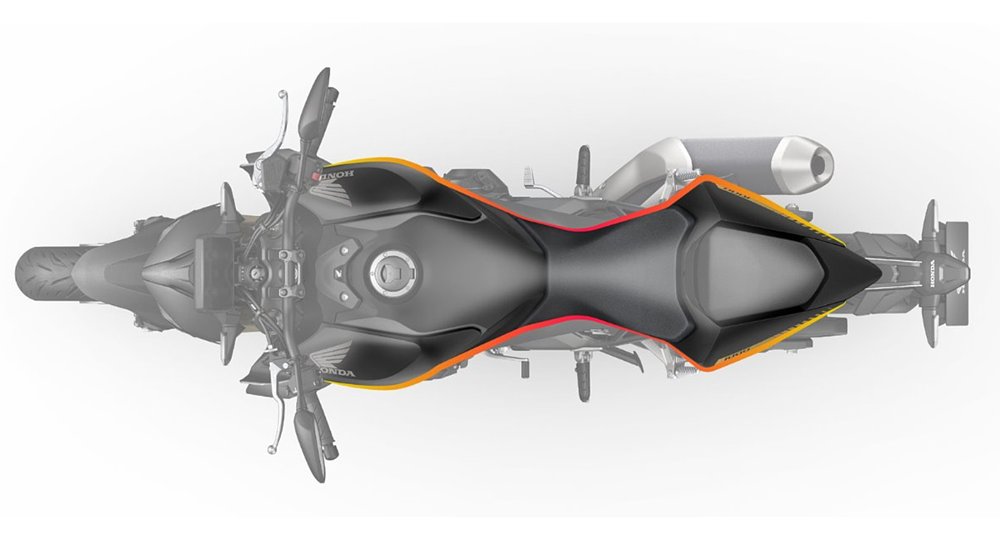
The arrival of the CB1000 Hornet SP does not quite bring us to parity with European consumers, because the U.S. market only gets the SP version, not the base CB1000 model available elsewhere. But considering the SP's price, that's not such a deprivation.
The SP comes with upgraded suspension in the form of a fully adjustable Öhlins TTX36 shock on the rear and a 41 mm inverted Showa Separate Function Fork Big Piston (SFF-BP) in front, both offering more than five inches of travel. Brakes are also upgraded with Brembo Stylema radial-mount four-piston calipers in front and a Nissin caliper on the back wheel.
Hornets were traditionally four-cylinder models, and while that's no longer true with the new CB750, the CB1000 carries a classic, Japanese, inline-four engine in its steel, twin-spar frame. The engine is derived from the one that dates back to the 2017 CBR1000RR. American Honda does not typically announce power output. In Europe, the SP makes a claimed 155 horsepower, but reports here, based on regulatory documents, have speculated the U.S. model will be about 25 horsepower weaker. We won't know the real number for sure until we see some dyno tests. Honda says differences between its European and U.S. models are due to the fact that the European standards are stricter on emissions while the U.S. standards are tighter on sound.
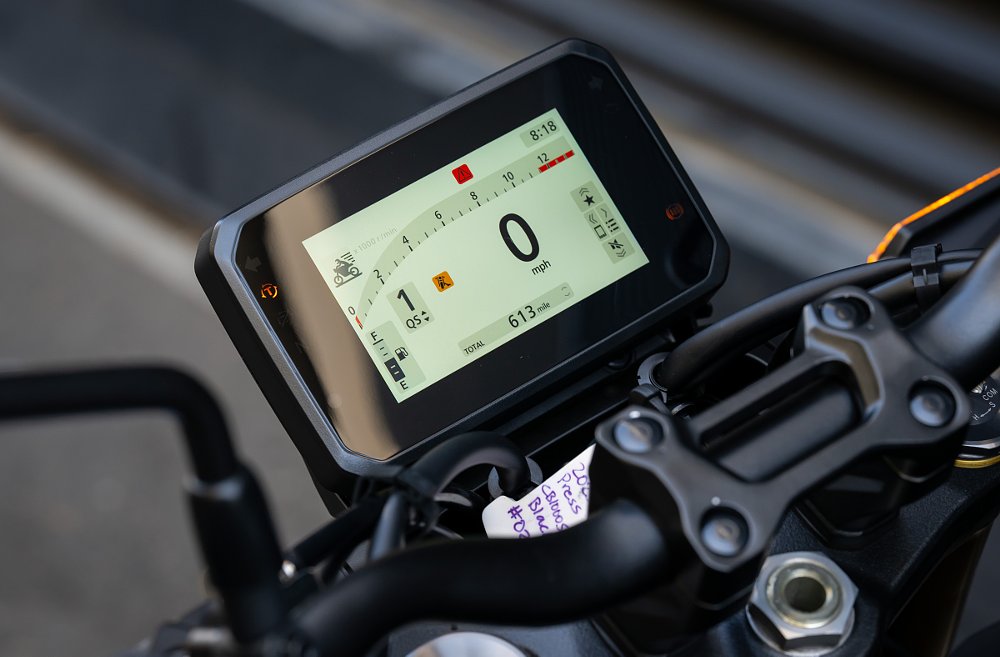
The Hornet comes with three preset ride modes, Standard, Sport, and Rain. The rider can set two additional customized ride modes. Three parameters change based on the ride mode: three levels of power delivery, traction control, and engine braking. For example, Standard chooses the middle level of all three parameters. Sport chooses the lower levels of traction control and engine braking and the most aggressive level of power delivery. The three "Power" settings do not change the level of maximum power, but rather the way it's delivered, from a softer to a more abrupt response. In the two user modes, traction control can be turned off, but there's a catch — for your own safety, apparently — that you would-be hooligans or track-day riders out there need to know. Say you set User 1 to the most aggressive power delivery, the lowest level of engine braking, and with traction control off. Each time the motorcycle is powered off, the user mode will reset to traction control on, but at the lowest setting, while the other settings remain the as you set them. In other words, you'll have to go into the menu and turn off traction control every time you turn on the key, if you want to ride without the safety net.
The SP also comes stock with a quickshifter that can be adjusted to three settings independently for upshifts and downshifts.
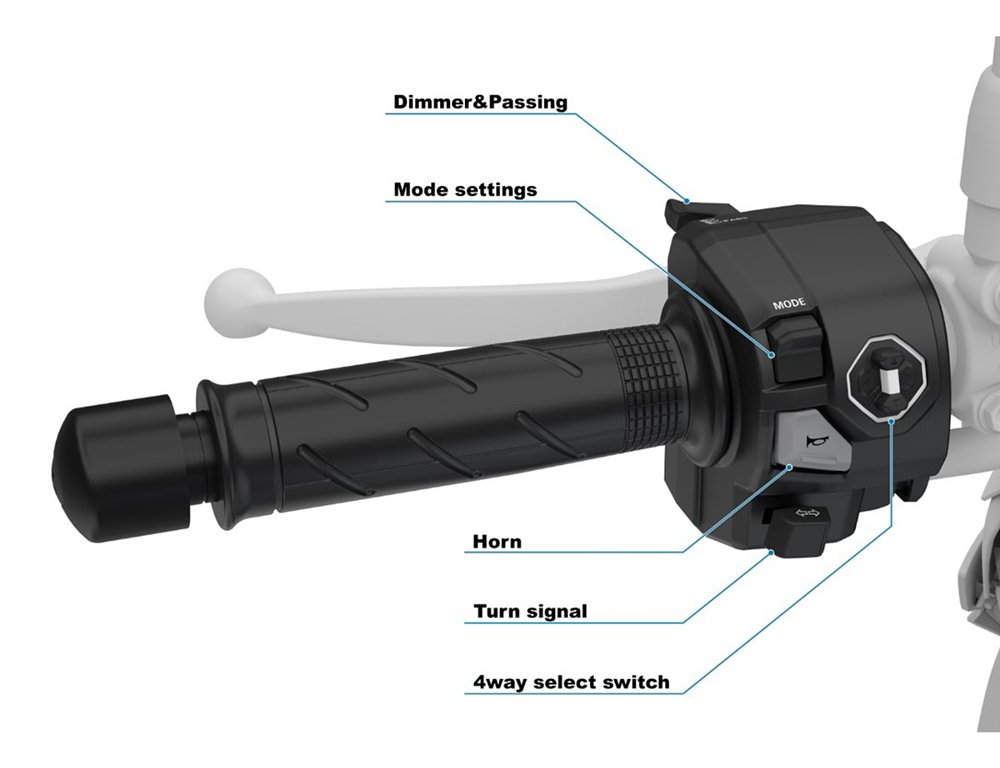
Fortunately, getting into the settings doesn't require an advanced IT degree. After reading Dustin's recent report on the Honda NT1100, which has 17 buttons on the left switchgear, I was worried that riding the Hornet might be like trying to play the piano with one thumb. Not so. A separate mode button allowed me to switch ride modes on the fly and a single four-way switch made navigation through the menus reasonable.
All the information is displayed on a five-inch TFT dash that can be set to three different layouts and your choice of a light or dark background. The Hornet also comes with Honda's RoadSync, which allows you to connect your phone to the bike for calls, music, voice directions, etc. I didn't have a comm unit in the new helmet I took on this ride, so I wasn't able to test the voice connections.
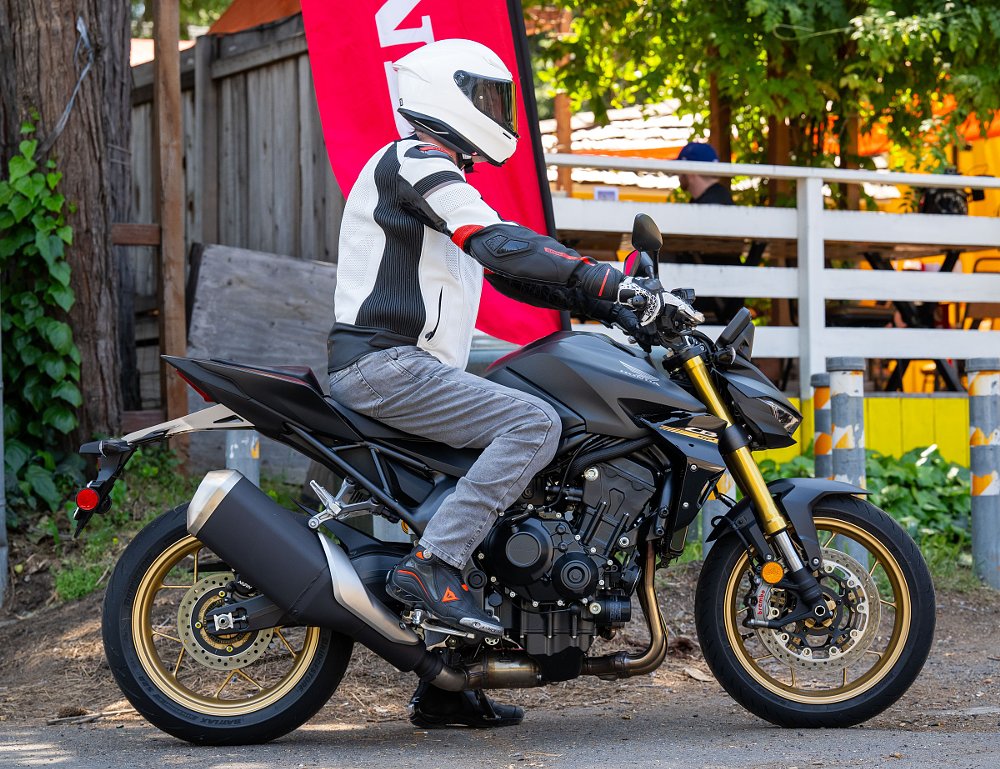
Riding the 2025 Honda CB1000 Hornet SP
To introduce us to the CB1000 Hornet SP (and the CB750 Hornet), Honda planned a ride very much like the kind of weekend recreational ride you'd expect a typical Hornet owner to take. From our base in downtown Sacramento, California, we rode east into the hills and past lakes of Gold Country, stopping, naturally, for some photos, a coffee break, and lunch. That meant we experienced a little city traffic, some freeway riding, some suburban sprawl, and then some delightful curving hill roads. The latter ranged from faster sweepers to series of tight hairpins, from dreamy-smooth sections to stretches where tree roots rippled the asphalt. In other words, a good test of a motorcycle that's supposed to be all-around capable.
While the Hornet's bare-naked styling and upright ergonomics provide no wind protection, that does mean I had undisturbed air flow over my helmet with no buffeting. That, along with the lack of vibration from the inline-four engine (Honda also uses rubber mounts where the engine bolts to the frame at the rear) made for a smooth ride on the freeway. Honda also made sixth gear significantly taller for lower engine speeds when just cruising down the highway.
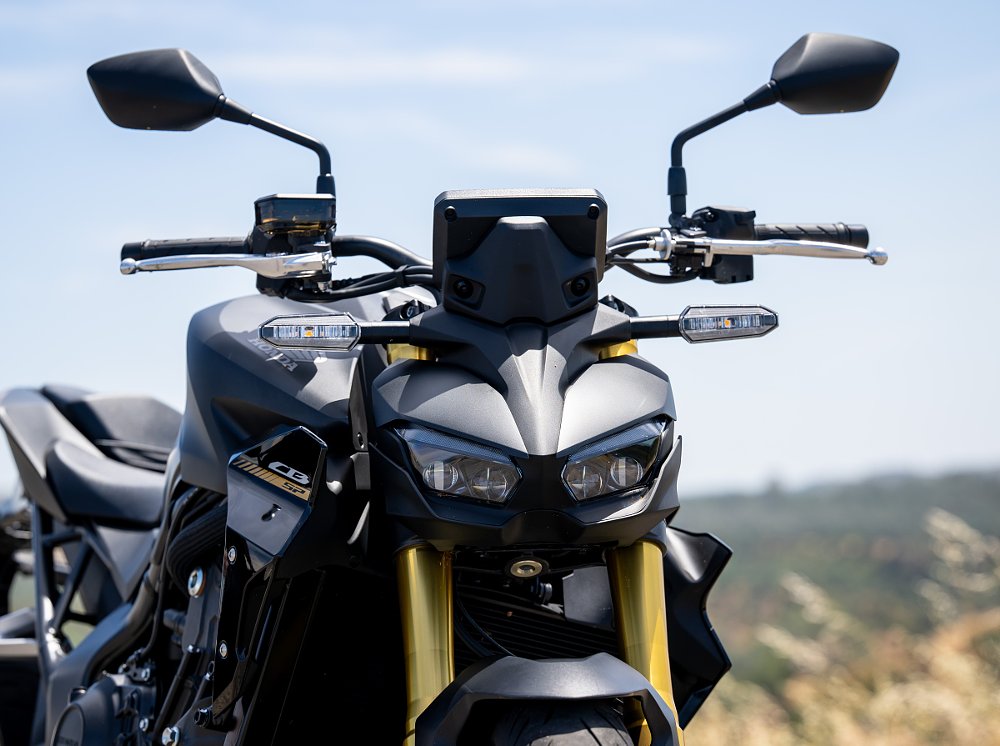
The slipper clutch is not as light as the CB750's but the pull is not particularly heavy, either, and since the quickshifter on the SP works well, there's no frequent need to use the clutch lever. Setting the quickshifter to the "soft" setting made shifts easier and smoother, for me. The higher settings require more effort to initiate a shift and increase that effort further as engine speed rises.
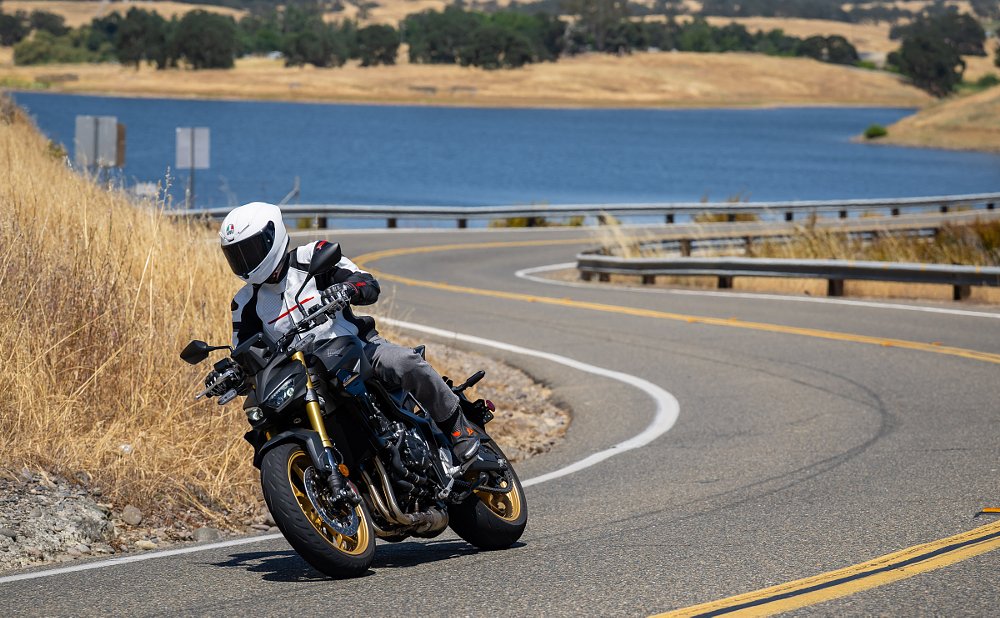
As we got out on open roads, I tried both the Standard and Sport ride modes and found the difference between them was less than I expected, and less than I'd experienced the day before on the CB750. The power delivery, like the quickshifter sensitivity, is really just a matter of personal preference. The "3" setting on power gives the same total power as "2," but the middle setting makes it easier for me to be smooth with the throttle, so I'd probably leave it there forever, except when using Rain mode. The good thing about the adjustability is you can choose what feels right to you. Whichever you choose, throttle response is refreshingly free of the undue abruptness that afflicts many other models these days.
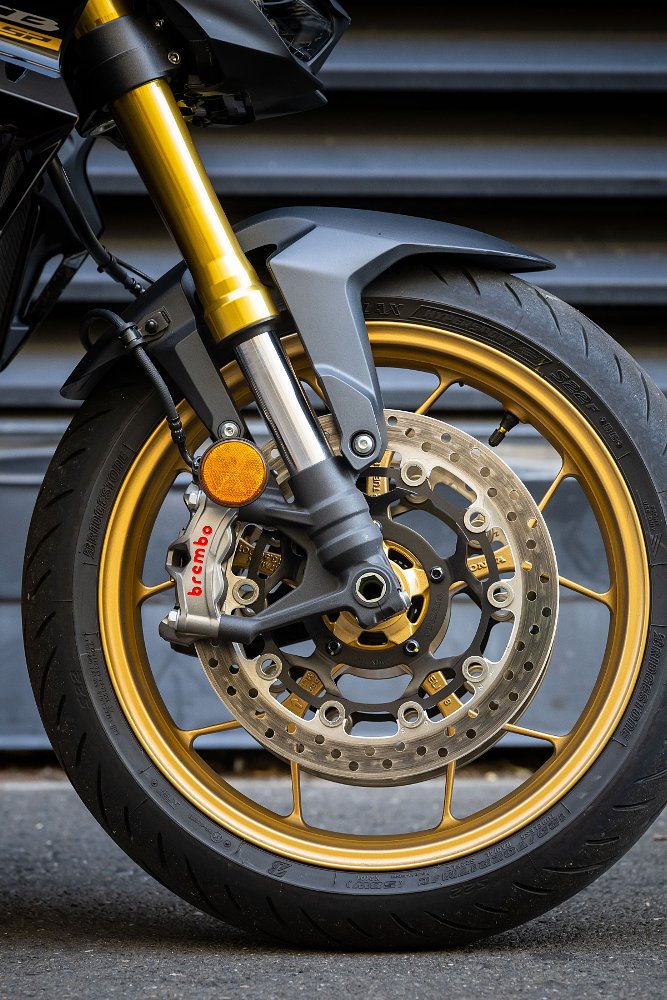
The Brembo brakes up front provided a little less initial bite than I expected but were everything I'd ever need for street riding, for sure. Honda says the CB1000 SP weighs 465 pounds full of fuel and ready to ride, and that weight, quite competitive for its class, reduces demands on brakes and suspension. And speaking of suspension...
I admittedly expected great things from the Öhlins TTX36 shock, but as soon as we reached the backroads portion of our ride, the seat was literally kicking my ass. Trying to keep up with the Honda ride leader on a twisty road with frequently rippled pavement was doubly hard for me when the rear tire wasn't always in contact with the pavement. In a bumpy section, I saw the traction control light flash as the rear tire momentarily went airborne.
At the first stop, the Honda tech pulled out his T-handle and backed off the preload a little and also reduced compression damping by two clicks. That felt better. At the next stop, I reduced compression two more clicks and rebound damping by two clicks and felt comfortable and secure the rest of the ride.
It's interesting to note that the non-adjustable suspension on the CB750 felt right for me from the moment I got on. But if it hadn't, I'd have been out of luck. The expensive suspension on the CB1000 SP didn't suit me (and the lightest rider in our group said it was even worse for her, though that didn't seem to stop her from riding off into the distance at speed), but with a few adjustments I got it close to just right. And with more time, I'd have probably been able to dial it in even better and I'd have fine-tuned the front suspension to match.
So what have we learned? Adjustable suspension isn't worth the money until you need it and then it's worth every penny and more.
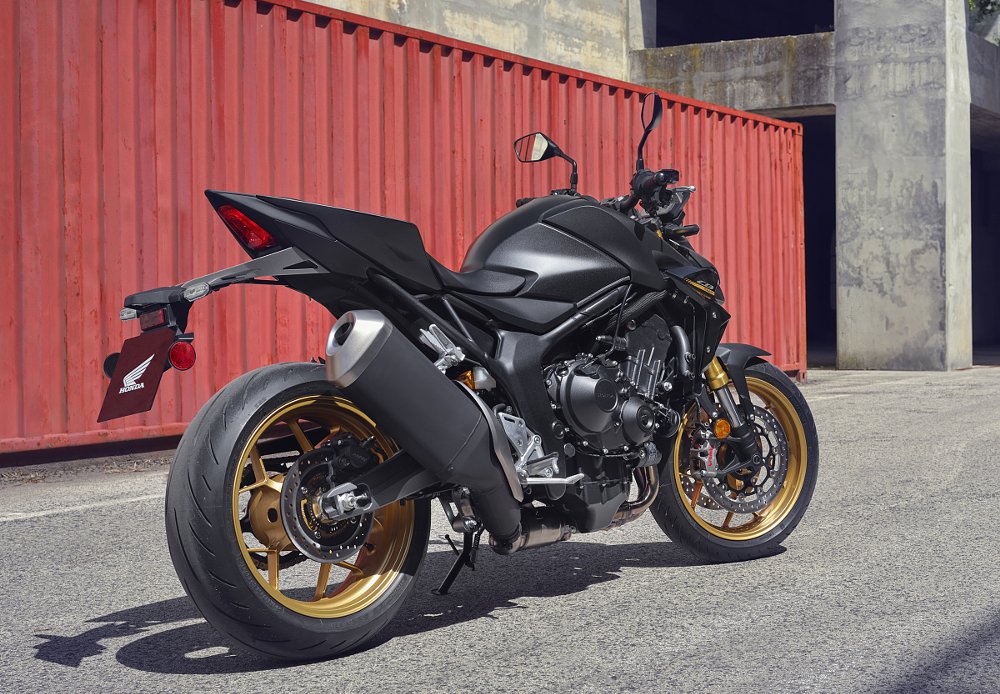
So what's not to like?
The CB1000 Hornet SP essentially replaces the CB1000R in Honda's lineup, offers higher spec components, weighs a little less, and carries a price $2,000 lower. Sounds like progress to me. So what's not to like?
Well, maybe a couple of things.
For one, there's the yet-to-be-answered question of power. In a competition of who has the most finely tuned butt dyno, I'm conceding defeat to my colleagues Ari or Zack without even trying. Does the U.S. version of the CB1000 Hornet SP have closer to the 155 horsepower claimed in Europe or the 129 horsepower some expect? I can't say. But after riding the CB750 Hornet, I expected to feel a bigger jump when I moved to the CB1000 SP, so maybe that's a hint. Beyond total power is the nature of the trip up the tachometer. This is a liter-class four-cylinder engine, so nowhere in the rev range can the power be called weak, but above 6,000 rpm is where the Hornet really takes flight.
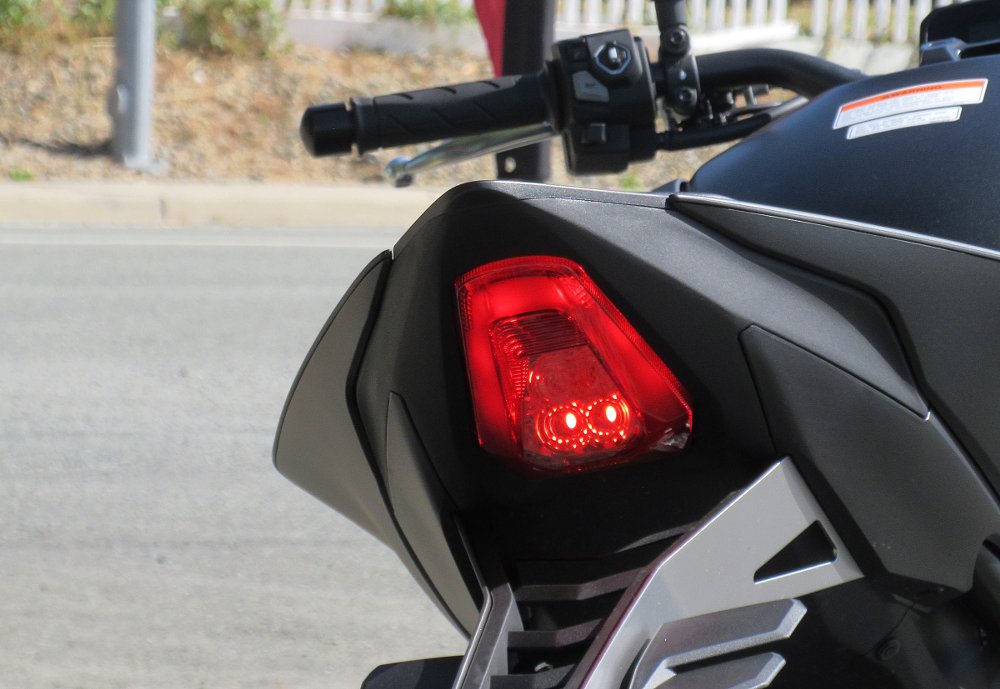
My second nitpick is the seat. Having personally put six-figure mileage on a naked bike, I'm not reluctant to do long miles without wind protection. The CB1000 Hornet SP is certainly capable. The riding position is comfortable for hours and the legroom is adequate. But the seat felt hard as a rock by the time we made our first stop. It also narrows down at the front, which makes it easier for the rider to get feet flat on the ground. I would definitely take a long trip on the Hornet, but I'd probably want to stop for a butt break (I don't smoke; I'm being literal) even before I'd need to refill the 4.5-gallon fuel tank. Or else I'd start looking at aftermarket options.

The seating is even worse for the passenger. I would probably never give a ride to anyone on a CB1000 Hornet SP because I don't give rides to people I don't like and I wouldn't subject anyone I do like to sitting on that hard foam wedge of a passenger seat for more than a few city blocks.
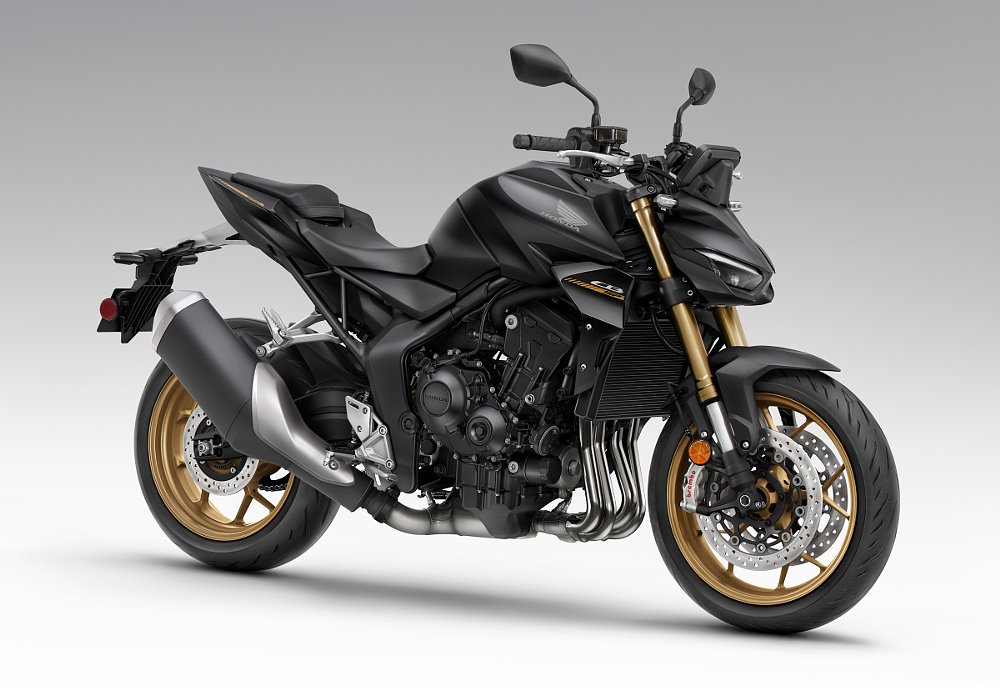
The do-it-all street bike?
So if all I can find to complain about is that it could, maybe, have a little more power and the seats aren't comfy enough, then that tells you this Hornet has a lot going right. I could whine about not having steel braided brake lines or cruise control, but we're talking about a liter bike with fully adjustable suspension and Brembo brakes for under $11,000. The big Hornet is a fast and agile motorcycle that lives up to its design brief and will handle a broad range of riding missions. Pretty much anything on pavement, if you ask me.
Unlike my younger colleagues, I was riding motorcycles back when four-cylinder Japanese motorcycles with no fairings were everywhere. We just called them street bikes. Then came the age of segmentation and specialization. In the last few years, we've seen some manufacturers shift some models upscale, adding features such as electronically adjustable suspension and adaptive cruise control, and raising the price accordingly. In at least a few cases, sales of those bikes dropped off, and some were even discontinued. Based on that, it seems to me that many people still want a street bike, a motorcycle with ample performance and essential features but without costly extra frills. If that sounds like you, give the CB1000 Hornet SP a look.
| 2025 Honda CB1000 Hornet SP | |
|---|---|
| Price (MSRP) | $10,999 |
| Engine | 1,000 cc, liquid-cooled, 16-valve, inline four-cylinder |
|
Transmission, final drive |
Six-speed, chain |
| Claimed horsepower | N/A |
| Claimed torque | N/A |
| Frame | Steel twin-spar |
| Front suspension | 41 mm Showa Separate Function Fork Big Piston (SFF-BP), adjustable for preload, compression, and rebound damping; 5.1 inches of travel |
| Rear suspension | Öhlins TTX36 shock, adjustable for preload, compression, and rebound damping; 5.5 inches of travel |
| Front brake | Dual Brembo Stylema radial-mount four-piston calipers, 310 mm discs, with ABS |
| Rear brake | Single Nissin one-piston caliper, 240 mm disc, with ABS |
| Rake, trail | 25 degrees, 3.9 inches |
| Wheelbase | 57.3 inches |
| Seat height | 31.9 inches |
| Fuel capacity | 4.5 gallons |
| Tires |
Michelin Road 6*, 120/70R17 front, 180/55R17 rear (* - as tested; some will come with Dunlop Roadsport 2 tires) |
| Claimed weight | 465 pounds wet |
| Available | Now |
| Warranty | 12 months |
| More info | powersports.honda.com |




